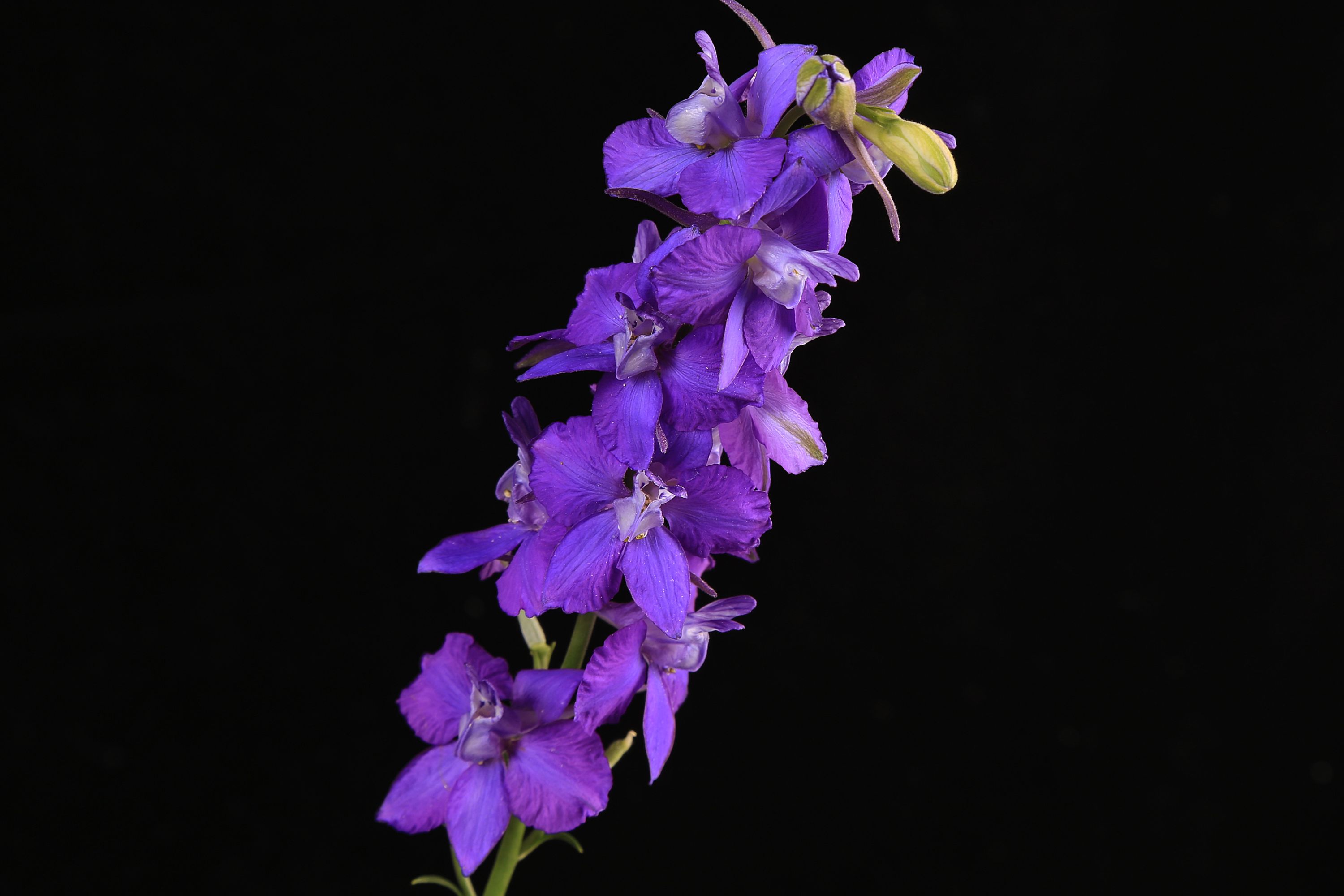Stavesacre
(Delphinium staphisagria)

Description
Staphisagria macrosperma, formerly known as Delphinium staphisagria, is a species of Staphisagria of the family Ranunculaceae. It used to belong to the subgenus or section Staphisagria of the genus Delphinium, but molecular evidence suggests Staphisagria should be a genus which is a sister group to the Aconitum-Delphinium clade. It is described botanically as a stoutly-stemmed, hairy biennial with large palmate leaves up to 6 inches (15 cm) across. The flowers are mauve-blue to blue, short-spurred, and up to 1 inch (2.5 cm) across, occurring in racemes. The plant grows to a height of 4–5 feet. It grows throughout the Mediterranean. All parts of this plant are highly toxic and should not be ingested in any quantity. The genus name Staphisagria and the common name stavesacre come from the Ancient Greek name mentioned by Dioscorides, σταφὶς ἀγρία (staphis agria, "wild raisin"). Dioscorides described the plant as having wild grape vine-like leaves, but Barton and Castle considered the name as an allusion to the large wrinkled brown seeds. This name derivation by Barton and Castle seems to have been arrived at independently by a modern horticulturalist, David Bassett, who also gives a detailed account of his experiences in growing this species. Ancient Greeks also called the plant φθειροκτόνον (phthiroctonon, "louse killer") because of its use in traditional medicine to kill lice. This meaning is retained in many of the plant's common names in different languages, such as lice-bane in English, matapiojos in Spanish, bit otu in Turkish. The use of herbal preparations made from S. macrosperma (D. staphisagria) seeds for destroying body-lice has been recognized since antiquity. The Greek physician Dioscorides and the Roman historian Pliny are most often mentioned in this context, and in assessing this classical literature, Barton and Castle expressed the opinion that Dioscorides's description of staphis agria was consistent in most respects with the plant they knew as Delphinium staphisagria. One of the founders of American pharmacognosy, John Uri Lloyd, writing in his famous Pharmacopeia, also cited references to the use of D. staphisagria preparations in the writings of Nicander and Crescenzio.
Taxonomic tree:







